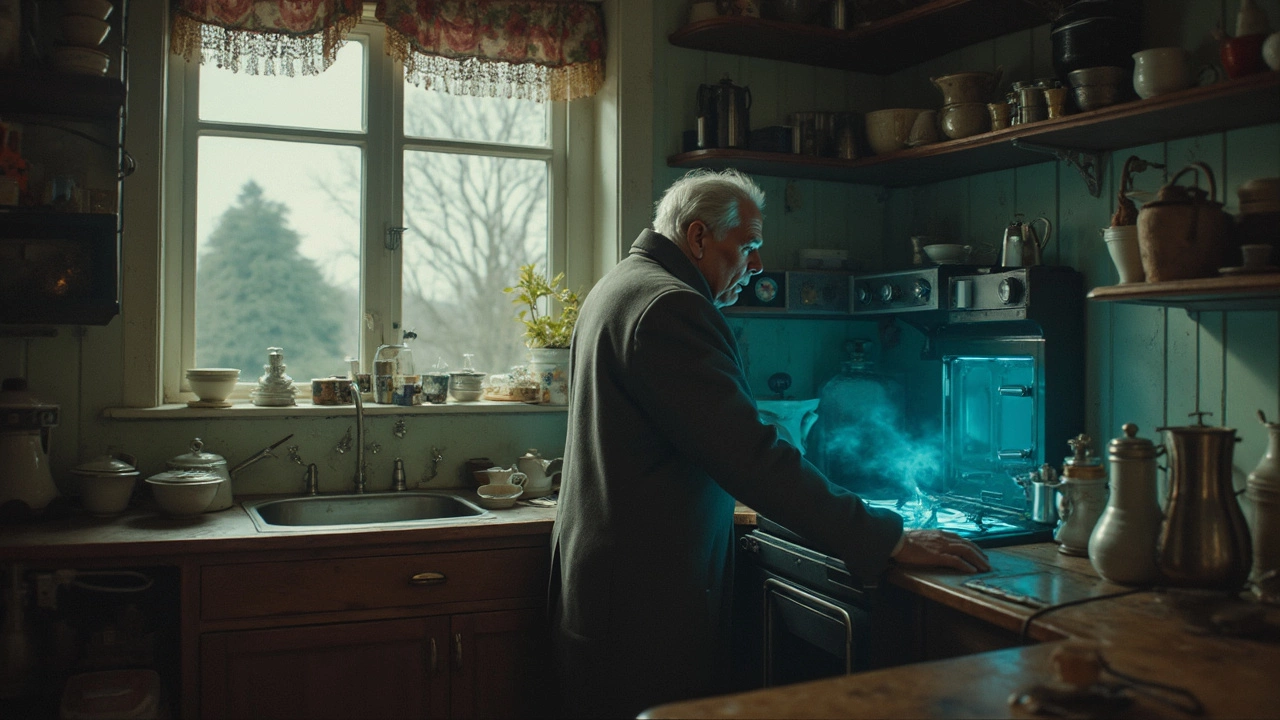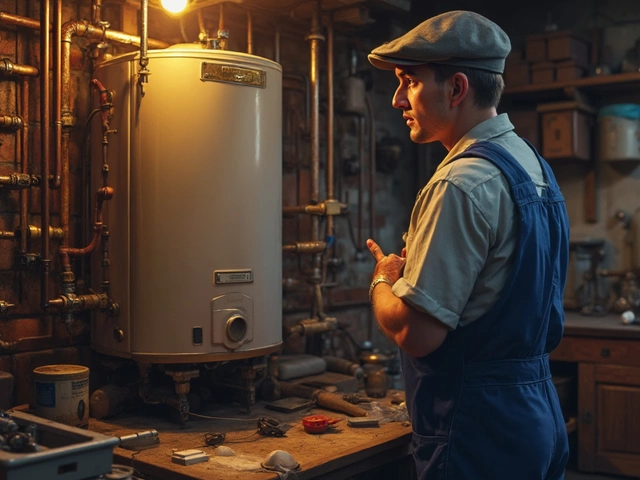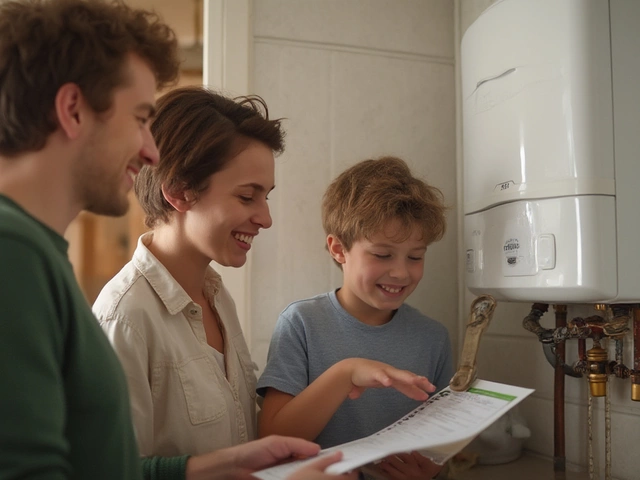Have you ever found yourself waiting forever for that pizza to cook, only to discover the cheese is crispy but the bottom’s still soggy? Yeah, we’ve all been there! This might be your oven waving a little white flag and asking for retirement. But how do you know if it’s really time to replace it?
Signs like temperature inconsistencies or loud, strange noises could mean your oven's approaching its last bake-off. While some issues, like broken knobs or dials, can be easily fixed, when your oven's repair costs start climbing higher than your grocery bill, it might be time to consider getting a new one.
On top of that, if you're catching a whiff of gas or noticing burnt cables, safety should be your top priority – time to say goodbye to the old and bring in the new! Let’s break down the tell-tale signs your kitchen companion needs an upgrade and what's worth repairing.
Signs of a Faulty Oven
Is your oven acting up? Don’t ignore these red flags. Recognizing signs of a failing oven early can save you from an unexpected turkey disaster come holiday time!
Uneven Cooking
One of the biggest giveaways is food not cooking evenly. You know, when one side of your lasagna’s bubbling away while the other is just warming up. This might mean your heating elements are on the fritz, or maybe the temperature sensors have checked out.
Temperature Problems
If your electric oven has you guessing when it’s actually preheated, there’s likely a problem with the thermostat or temperature sensor. An oven should quickly reach its desired temperature and maintain it. If it’s dragging its feet or fluctuating, it might be worth checking out.
Weird Noises
Ovens aren’t exactly a quiet appliance, but any grinding, ticking, or buzzing isn’t normal. Usually, this points to issues with the oven’s fans or motors. Ignoring these sounds can lead to bigger problems down the road, so better have it looked at sooner rather than later.
Visible Damage
Cracks, rust, or other forms of visible wear and tear can indicate structural damage. These might affect your oven’s ability to seal properly, making it less efficient at cooking your meals.
Unusually High Utility Bills
Notice your electricity bill creeping up? A faulty oven might demand more energy than it should, running inefficiently and costing you more in the long run.
| Issue | Possible Cause |
|---|---|
| Uneven Cooking | Faulty Heating Elements |
| Temperature Fluctuations | Broken Thermostat/Sensors |
| Noises | Fan/Motor Issues |
| Visible Damage | Structural Wear |
| High Utility Bills | Energy Inefficiency |
If any of these symptoms sound familiar, it might be time to consider a serious repair or a fresh face-lift for your kitchen with a new appliance. Remember, listening to your oven can save you a heap of trouble down the line!
Performance Issues
When your electric oven isn’t performing like it used to, it can throw a wrench into your dinner plans. One of the most obvious signs of a struggling oven is uneven cooking. You're baking cookies, and half turn out perfectly while the others remain doughy. This inconsistency can often mean the heating element is failing, a problem that's pretty common with older ovens.
If your oven takes ages to preheat, it might not just be your impatience. Slow preheating can be a red flag for a thermostat that’s lost its way or a heating element nearing the end of its life. You should ideally feel warm air as soon as you start the oven. No heat? No bueno!
Energy Efficiency Check
An important point to consider: oven replacement could be more energy-efficient. Today’s models use less power to do the same job, meaning lower utility bills for you. Generally, if your appliance is over ten years old, it might be an energy hog compared to modern options.
Time To Dig Deeper
Once you notice these performance issues, it’s a good idea to check a few things:
- Inspect the door seal. Is it closing properly? A broken seal lets heat escape.
- Listen for odd noises. A loud humming or rattling might indicate a fan motor problem.
- Test the temperature. Use a thermometer to see if your oven’s actual temperature matches the setting.
Don't ignore these issues. Continued neglect can lead to bigger problems down the line, or worse, completely ruin your signature dish. Sometimes, replacing an old, tired oven saves you more in the long run than maintaining a slacker.

When Repair Costs More Than Replacement
So, you’ve had a tech savior by to fix your electric oven once, twice, and now it’s starting to feel like a monthly appointment. Here’s the thing: there comes a point where throwing cash at an old oven just doesn’t cut it anymore.
First off, consider a simple math check. If the cost of repairs is creeping close to, or over, 50% of the price of a new oven, it’s probably time to start looking at catalogs. Repairing an old, inefficient oven multiple times over its life may cost more than investing in a new one. And with tech improving every year, newer models might offer energy savings you didn’t know you needed.
Signs Your Repair Costs Are Piling Up
- Unpredictable temperatures that suggest a broken thermostat.
- Electrical issues causing frequent short-circuiting.
- The oven takes ages to heat up or doesn’t heat at all.
Think you might be going overboard on repairs? It’s a good idea to compare, create a little budget table if you’re nifty with numbers:
| Feature | Repair Cost | Replacement Cost |
|---|---|---|
| Thermostat | $200 | $800 (new oven) |
| Heating Element | $150 | $800 (new oven) |
| Control Panel | $250 | $800 (new oven) |
With repair costs stacking, it’s valuable to think long-term. Your wallet might thank you later!
Future-Proofing Your Kitchen
What if you decide on a new one? You get the perks of updated features like multifunctional cooking modes, smart connectivity, and better energy efficiency. Not to mention the peace of mind knowing you won’t have to call the repairman anytime soon. So, weigh out those repairs against buying new. Sometimes, it’s best to move on to avoid frying your patience (and your finances)!
Safety Concerns
Your oven should be your kitchen's best friend, but if it's acting more like a hazard, it's time to take those safety concerns seriously. An oven that's on its last legs might be more than just a nuisance; it could be dangerous.
If you notice any burnt smells that aren't coming from your overcooked dinner or see sparks flying, your oven might be having electrical issues. This is not something to brush under the rug, as electrical faults can lead to fires.
Gas Leaks
For those with gas ovens, pay attention to any consistent gas smells, especially when the oven is off. A gas leak is a serious problem and warrants immediate attention. Get a professional in to check it out ASAP.
"An unchecked gas leak can lead to carbon monoxide poisoning, which is a silent killer," warns the Australian Gas Association.
Fire Hazards
Ovens with damaged wiring or heating elements are another big red flag. If your oven's displaying visible wear and tear, it might start more than just your meals on fire.
Proper Ventilation
A healthy oven is one that ventilates well. If you're noticing a buildup of smoke or leftover food smell, it may not be ventilating properly, increasing the risk of fire hazards.
| Year | Oven-Related Fires (Australia) |
|---|---|
| 2022 | 12,000 |
| 2023 | 11,700 |
If any of these issues sound familiar, it's better to be safe and consider an oven replacement. After all, it’s cheaper than a call to the fire department! Stay safe and make sure your kitchen appliances are in tip-top shape.







